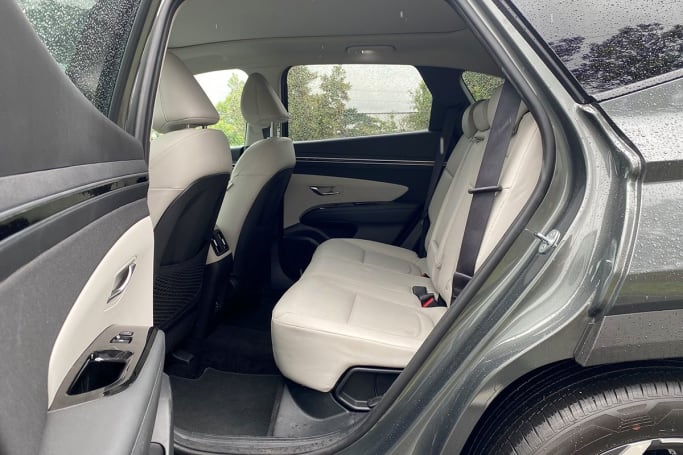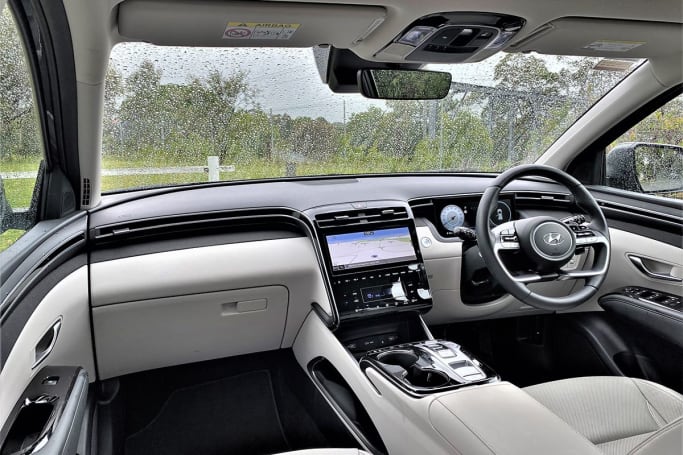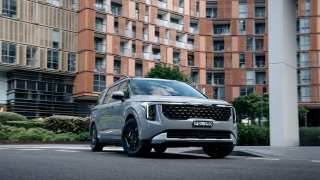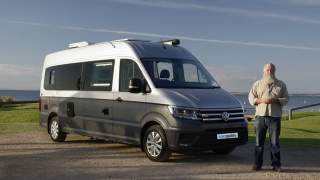The Tucson Highlander is a mid-sized SUV, so it’s about the same size as a Toyota RAV4, but it looks quite different. The RAV4 is more angular whereas the Tucson is rounded, although the crisp origami-like creases in the door panels make this Hyundai look modern and unique.
An enormous grille that almost covers the entire face of the car features built in LED running lights, which set this SUV apart from many of its rivals, as do the taillights, with their jagged, shark-tooth design.

This new-generation Tucson came to Australia in 2021, so the cabin tech is also modern and the styling of the interior still feels fresh. I especially liked the media screen and the way it’s integrated into the floating centre console in the same fashion that premium brands like Land Rover are choosing.
Adding an even more prestigious feel to the interior was the optional Grey leather upholstery in our test car.
For a completely different look, but pretty much the same car underneath, you should check out the Kia Sportage, which shares pretty much the same engineering as the Tucson, thanks to the fact that both of them share a parent company.


















